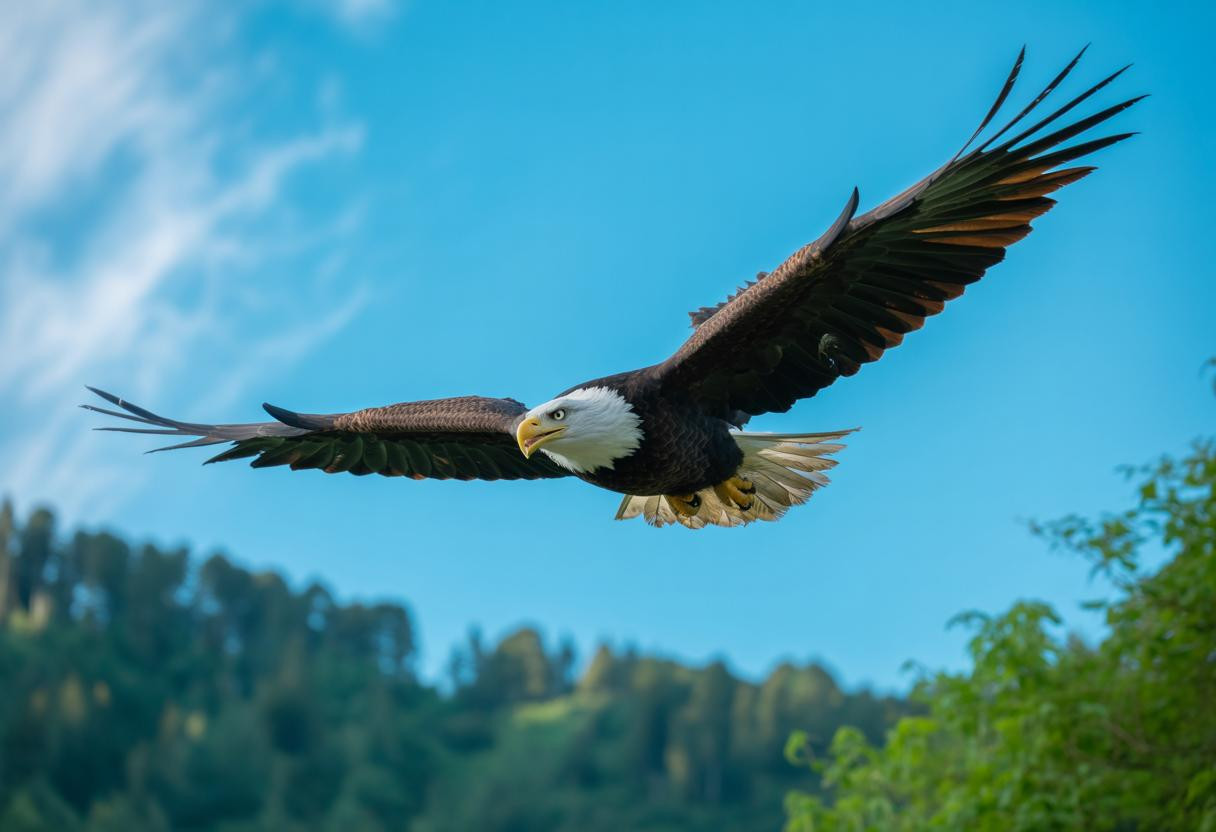Spotting America’s national bird in its summer glory has never been more promising, with 316,700 bald eagles now soaring across the lower 48 states—a remarkable recovery that’s created unprecedented viewing opportunities. From Alaska’s legendary Chilkat Preserve hosting up to 3,000 eagles during peak season to surprising urban sightings in places like New York City, these majestic raptors are expanding their range and captivating wildlife enthusiasts nationwide.
The remarkable comeback story reshaping eagle tourism
The transformation has been nothing short of extraordinary. In the 1970s, only 417 nesting pairs existed across the entire United States. Today’s population represents one of conservation’s greatest success stories, with numbers quadrupling since 2009 alone.
California exemplifies this dramatic recovery, witnessing a 19% annual population increase from 2011 to 2024. The state’s central interior now supports 31 nesting pairs with an impressive 77% fledging success rate, proving that targeted conservation efforts deliver measurable results.
This once-endangered bird rebounded from 417 pairs to 300,000 after scientists discovered the hidden culprit behind their near-extinction, fundamentally changing how we approach wildlife protection today.
Prime locations where eagles gather this summer
Alaska’s unmatched eagle concentrations
The Chilkat Bald Eagle Preserve remains North America’s premier eagle destination, supporting 500 resident eagles year-round with seasonal peaks reaching 3,000 during salmon runs. Summer visitors witness incredible fishing displays as eagles capitalize on abundant salmon spawning.
Lake Coeur d’Alene in Idaho recently recorded 409 eagles in a single day, including 363 adults and 46 juveniles, demonstrating the Pacific Northwest’s growing eagle populations.
Midwest river corridors offering surprise encounters
Yellowstone National Park monitors 31 active eagle territories, with 13 nests occupied in 2023 producing 8 successful fledglings. The park’s careful management balances human recreation with critical nesting habitat protection.
Minnesota’s National Eagle Center along the Mississippi River provides exceptional winter viewing, while Missouri’s river corridors host thousands of eagles drawn to unfrozen waters near locks and dams.
Conservation challenges threatening future populations
Despite remarkable recovery, eagles face emerging threats that could impact long-term sustainability. Lead poisoning from ammunition remains the primary killer, affecting up to 40% of eagles in certain regions through contaminated carcasses.
The deadly poison killing 40% of America’s bald eagles and how hunters can stop it reveals how simple ammunition choices can dramatically reduce eagle mortality rates.
Climate change presents new challenges through increased wildfire frequency threatening nesting trees and altered prey availability. California’s eagles particularly face habitat pressure from development and climate-induced environmental changes.
Optimal viewing strategies for summer encounters
Ethical observation techniques
Maintain 400+ yards distance from active nests to avoid disturbing breeding pairs. Eagles are particularly sensitive during nesting season, and human interference can cause nest abandonment.
Focus on areas with tall trees near water sources, specifically gray pine and Fremont cottonwood habitats in California, where eagles build nests approximately 0.36 kilometers from water bodies.
Peak timing and locations
Summer eagle viewing capitalizes on breeding behavior and territorial establishment. Early morning and late afternoon provide optimal lighting for photography while eagles are most active hunting.
Why 78% of Americans find deep stress relief in these wild eagle moments this week explores the profound psychological impact of witnessing these magnificent birds in their natural habitat.
Technology enhancing eagle research and viewing
Advanced telemetry studies reveal eagles can travel 225 miles per day during migration, providing crucial data for habitat protection strategies. These tracking technologies help scientists understand seasonal movement patterns and identify critical conservation areas.
Modern monitoring techniques show eagles adapting to urban environments, with non-breeding “floaters” exploring new territories and food sources throughout their range.
Planning your eagle adventure delivers lasting impact
The resurgence of America’s national bird represents more than conservation success—it symbolizes our capacity to restore damaged ecosystems through dedicated effort and scientific understanding. Whether visiting Alaska’s pristine preserves or discovering eagles in unexpected urban settings, each encounter connects us to one of nature’s most remarkable comeback stories while supporting ongoing conservation efforts that ensure future generations can witness these majestic birds soaring free.
